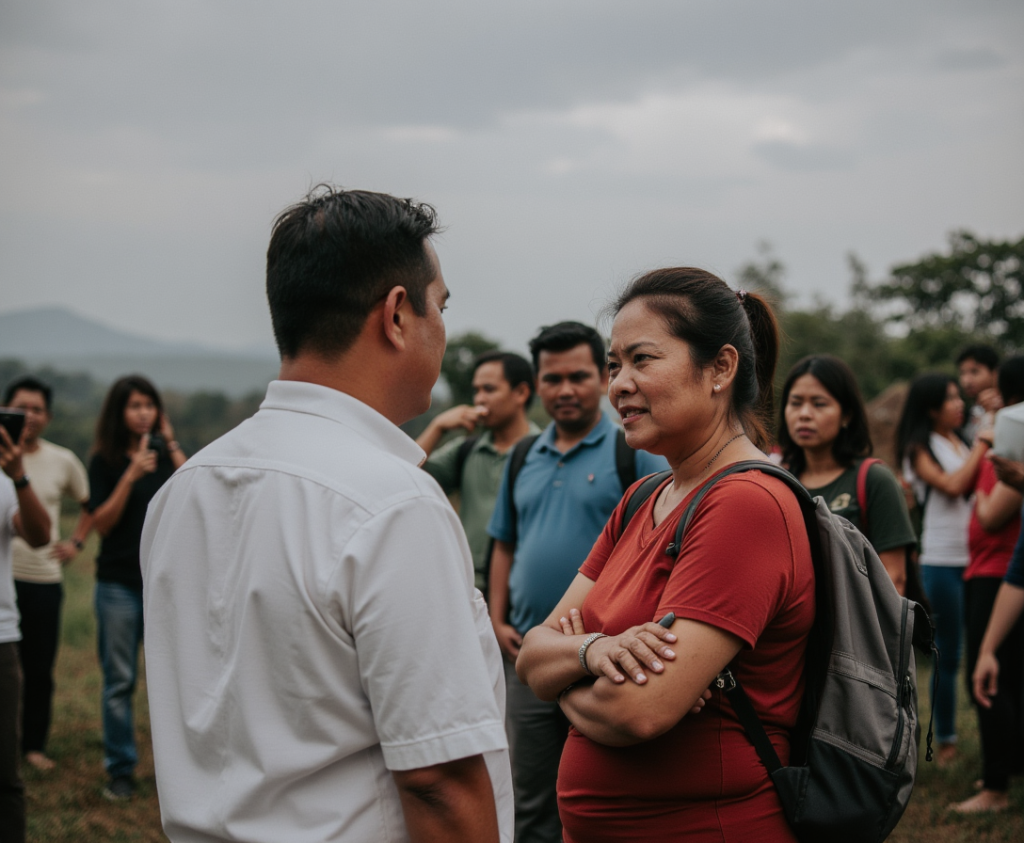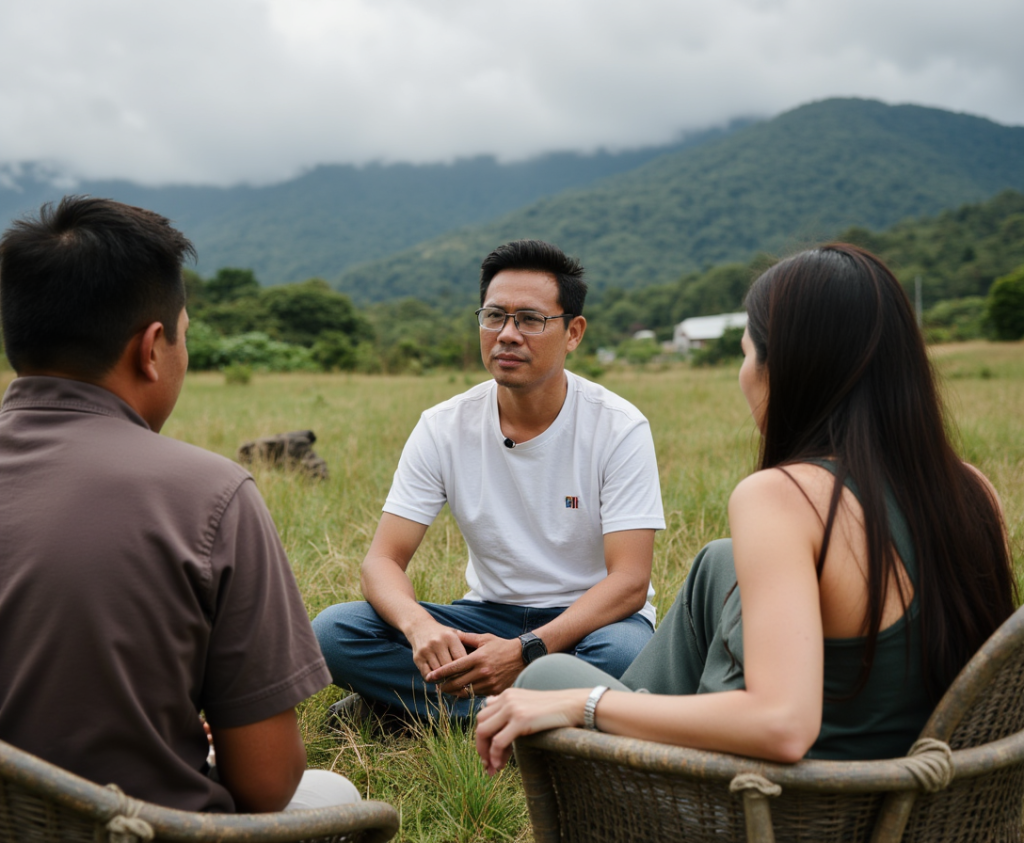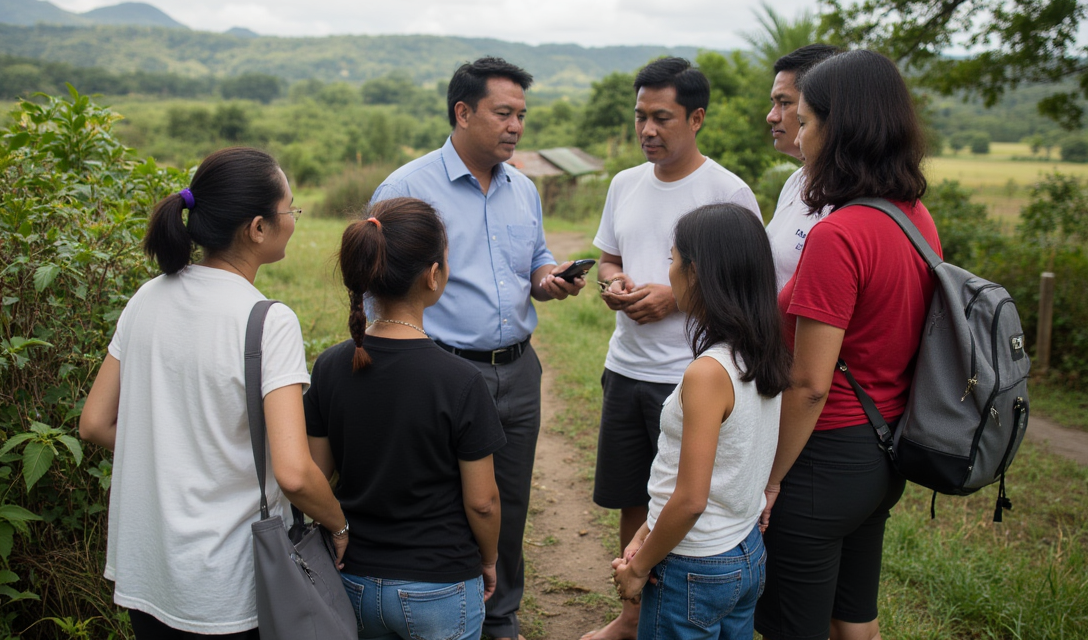Stories are the threads that bind us together. Imagine walking through your barangay, where each corner holds a tale—of triumphs, struggles, and shared dreams. As political candidates and campaign strategists, tapping into these narratives isn’t just a clever strategy; it’s a powerful way to connect with the heart of the community. Storytelling in political campaigns has emerged as a vital tool for fostering genuine connections, and when you harness the rich stories from our barangays, you’re not only engaging voters but also inviting them to be part of a larger narrative.
Barangays are more than just administrative divisions; they are the lifeblood of local communities, embodying unique histories and shared values. Each barangay has its own identity, shaped by the experiences of its residents. By using barangay stories to fuel Facebook engagement for political campaigns, you’re opening the door to authentic conversations that resonate deeply with constituents. These personal stories can illuminate pressing issues, highlight community strengths, and inspire hope for the future. So, let’s explore how weaving these local narratives into your campaign can not only elevate your message but also create a lasting impact that goes beyond election day.
Understanding Barangay Stories
Barangay stories are more than just tales. They are the heartbeat of local communities. These narratives encapsulate the unique experiences, struggles, and triumphs of the people living within each barangay. When political candidates tap into these rich local narratives, they not only connect with their constituents on a personal level but also gain a deeper understanding of the values and issues that matter most to them. By using barangay stories to fuel Facebook engagement for political campaigns, candidates can foster a sense of belonging and community among voters.
Local narratives often reflect the very essence of a community’s identity. For instance, consider a barangay where residents have banded together to address flooding issues caused by heavy rains. The stories that emerge from this experience—of neighbors helping each other, local leaders organizing clean-up drives, or children finding creative ways to navigate flooded streets—showcase resilience and solidarity. These local stories highlight not only the challenges faced but also the collective spirit of the community. When candidates share these narratives in their campaigns, they demonstrate their alignment with local concerns and show that they genuinely care about the people they aim to serve.

The emotional impact of sharing personal experiences cannot be overstated. People connect through shared feelings and experiences, making it crucial for candidates to embrace the power of storytelling. When a candidate shares a heartfelt story about a community member overcoming adversity or highlights the dedication of local volunteers, it resonates deeply with voters. This emotional connection encourages constituents to engage more actively, whether by liking, sharing, or commenting on campaign posts. In turn, this creates an engaging dialogue that strengthens relationships and builds trust between candidates and their communities.
Understanding barangay stories is essential for any political campaign looking to make an impact. These narratives provide invaluable insights into community values and issues while creating emotional connections that can drive voter engagement. By harnessing these local stories effectively, candidates can craft campaigns that not only inform but also inspire and unite their constituents in meaningful ways.
Building Connection Through Relatable Narratives
Shared experiences can create a powerful bond between candidates and voters. When individuals see their own lives reflected in the stories being told, it fosters a sense of belonging and connection that is essential for engagement. For example, consider a candidate who shares a personal story about growing up in a barangay plagued by flooding every rainy season. This narrative resonates deeply with constituents facing similar challenges, making them feel understood and valued. By tapping into these relatable narratives, candidates can bridge the gap between themselves and their community, ultimately driving voter turnout.
Successful campaigns have mastered the art of using local stories to forge these connections. Take, for instance, the campaign of a mayoral candidate who highlighted the experiences of barangay residents struggling with access to healthcare. By sharing testimonials from those who had to travel long distances for basic medical services, the candidate not only raised awareness about pressing barangay issues but also positioned themselves as a champion for change. This approach not only engaged voters but also invited them to become part of the solution, creating a collaborative atmosphere around important community topics.
Identifying and curating relevant barangay narratives doesn’t have to be daunting. Start by engaging directly with community members through informal gatherings or social media platforms. Encourage residents to share their stories. Whether it’s about overcoming adversity or celebrating local successes. Local organizations and barangay councils can also be invaluable resources for collecting narratives that truly reflect the community’s values and experiences. By actively listening and seeking out these stories, candidates can create a rich tapestry of relatable content that speaks to the heart of their campaign and resonates with voters on a personal level.
Crafting Compelling Content for Facebook
When it comes to using barangay stories to fuel Facebook engagement for political campaigns, creating compelling content is essential. Start by weaving personal narratives into your posts. For instance, if a local farmer has a story about how community support helped him recover from a natural disaster, share that experience. Highlight his journey and how it reflects broader issues like agricultural support or disaster preparedness. This makes the content relatable and positions you as a candidate who understands and empathizes with the community’s struggles and triumphs.
Visuals and multimedia play a crucial role in storytelling, especially on platforms like Facebook where eye-catching content grabs attention. Consider creating short videos that showcase community members sharing their stories directly. A video of a local teacher discussing educational challenges can resonate deeply with voters, helping them connect emotionally with your campaign. Infographics that summarize key points from these stories or highlight achievements can also be effective. Remember, the more visually appealing your posts are, the more likely they are to be shared, increasing your reach and enhancing voter engagement.
Optimizing your content for Facebook’s algorithms is another vital step in maximizing engagement. Use keywords that align with community interests and current events to ensure your posts appear in relevant searches. Engaging questions at the end of your posts, such as “What does our community need most right now?” can spark discussions and encourage comments, further boosting visibility. Additionally, posting during peak times when your audience is most active can make a significant difference. By combining powerful barangay stories with strategic content creation, you can foster a vibrant online community that resonates with voters, ultimately driving them to engage with your campaign in meaningful ways.
Engaging with the Community
To truly harness the power of barangay stories, political candidates must actively encourage community participation. Imagine a local candidate walking through the neighborhood, inviting residents to share their personal experiences and stories that reflect their lives. This not only fosters a sense of belonging but also empowers constituents to feel valued and heard. By creating an open dialogue, candidates can tap into a wealth of community stories that highlight the unique challenges and triumphs faced by their constituents. This approach not only enriches the campaign narrative but also builds trust and rapport with voters.

Hosting events or forums is a great way to gather these local narratives. Picture a community gathering where people can come together to share their stories in a relaxed and welcoming environment. Whether it’s a storytelling night at the barangay hall or a casual coffee meet-up in a local café, these events serve as platforms for individuals to express themselves. Candidates can facilitate discussions around pressing issues, allowing community members to voice their concerns and aspirations. This creates a collaborative atmosphere where everyone feels invested in the campaign’s direction and vision.
Leveraging social media polls and surveys can also significantly enhance community engagement. By asking constituents questions about their experiences or opinions on local matters, candidates can gather invaluable insights while making voters feel involved in the decision-making process. For instance, a candidate might run a poll on Facebook asking residents which local issues they feel need immediate attention. This not only shows that the candidate values their input but also provides an opportunity to spotlight compelling community stories that emerge from these discussions. The key is to ensure that these interactions remain genuine and relatable, reinforcing the idea that every story matters.
Incorporating community stories into the campaign isn’t just about collecting anecdotes; it’s about weaving them into the fabric of the campaign itself. By engaging with constituents through various channels, candidates can create a rich tapestry of narratives that resonate deeply with voters. This not only humanizes the political process but also helps build an authentic connection that encourages active participation in shaping the future of their barangay.
Highlighting Local Issues and Successes
Political candidates can effectively address pressing challenges that affect their constituents by using stories form the barangay. For instance, in a barangay grappling with waste management issues, sharing the story of a community clean-up initiative not only sheds light on the problem but also highlights the collective effort to find a solution. This approach not only informs voters about the issues at hand but also fosters a sense of unity and shared purpose.
Showcasing the positive outcomes from local initiatives can be a powerful tool in any campaign. Imagine a candidate who shares a heartfelt story about how a community garden project transformed a vacant lot into a thriving green space. This narrative not only illustrates the impact of community-driven efforts but also inspires hope and encourages further participation. When constituents see real-life examples of change, it instills confidence in their leaders and motivates them to engage more actively in the political process.
Using barangay stories to fuel Facebook engagement for political campaigns is an effective strategy that resonates deeply with voters. Social media platforms allow these stories to reach a wider audience, making it easier for candidates to connect with their community on a personal level. By sharing videos or posts that spotlight local successes—like a barangay’s fight against poverty through livelihood programs—candidates can create a narrative that emphasizes their commitment to addressing local needs.
Ultimately, storytelling serves as a powerful advocacy tool that can lead to meaningful change. It bridges the gap between politicians and the people they serve, fostering trust and transparency. When candidates prioritize local narratives, they’re not just campaigning; they’re creating a movement built on shared experiences and aspirations. As you craft your campaign strategies, remember that every story matters, and each one has the potential to spark change in your barangay.
Measuring Engagement and Impact
Tools like Facebook Insights provide a wealth of data on engagement levels, including likes, shares, and comments on your posts. By regularly monitoring these metrics, you can gauge what types of barangay stories are hitting home with your audience. For instance, if a post about a local hero from your barangay garners significantly more interaction than others, it signals that your community values personal narratives and local pride. This information is gold; it allows you to double down on storytelling elements that foster grassroots connections and deepen your campaign’s impact.
Feedback from voters is another vital piece of the puzzle. Engage with your constituents through surveys or direct messages to gather their thoughts on the stories you’ve shared. You might discover that while people love hearing about community achievements, they also want more transparency regarding local issues. This kind of insight helps refine your campaign strategies, ensuring that you are not just telling stories but also addressing the concerns that matter most to your community. For example, if several voters express concerns about inadequate healthcare services in your barangay, pivoting your narrative to include personal stories that highlight this issue could drive home the need for change and showcase your commitment to addressing it.
The long-term benefits of building a narrative-driven campaign extend far beyond election day. By consistently sharing relatable barangay stories, you create a tapestry of community connection that can lead to lasting relationships between candidates and voters. This foundation fosters trust and loyalty, making constituents feel seen and heard. Imagine a scenario where a candidate not only wins an election but continues to engage with voters by highlighting ongoing community stories—this approach nurtures a culture of participation and accountability that can be transformative for local governance. In essence, when you measure engagement effectively and adapt based on feedback, you don’t just run a campaign; you build a movement rooted in the heart of the community.
Overcoming Challenges in Storytelling
One of the most significant hurdles is addressing skepticism or resistance from constituents. Many voters may have heard countless promises and narratives from past campaigns that ultimately fell flat. It’s essential for candidates to approach this challenge with empathy and transparency. By acknowledging the community’s previous disappointments and actively engaging them in conversations, candidates can rebuild trust. For instance, a local mayoral candidate might host informal “listening sessions” where constituents can share their concerns and experiences. This not only allows the candidate to gather authentic stories but also demonstrates a genuine commitment to understanding the community’s needs.
Navigating sensitive topics within local narratives can be a challenging task. Issues like poverty, crime, or discrimination can evoke strong emotions and reactions. However, these narratives are often critical in highlighting the realities that the community faces. The key here is to approach these topics with sensitivity and respect. For example, if discussing crime rates, a candidate could share a story of a local hero who turned their life around, emphasizing resilience and hope instead of merely focusing on statistics. This way, they can foster a sense of unity and encourage collective action toward solutions rather than fear or division.
Ensuring authenticity while crafting compelling stories is also crucial. Voters can easily spot insincerity, which can lead to disengagement. To maintain authenticity, candidates should prioritize sharing real stories from their constituents rather than creating fabricated narratives. This could involve partnering with community members to co-create content that reflects true experiences. A great example of this is a campaign that featured short video testimonials from residents discussing their struggles and triumphs, showcasing how local initiatives positively impacted their lives. By presenting these genuine stories, candidates not only resonate more deeply with voters but also reinforce their commitment to being advocates for their community.
In overcoming these challenges, candidates have the opportunity to transform skepticism into trust and create a narrative that genuinely reflects the heart of the barangay. By addressing resistance thoughtfully, navigating sensitive issues respectfully, and ensuring authenticity in their storytelling, political campaigns can forge stronger connections with voters, ultimately leading to more meaningful engagement and support.
Embracing Community Narratives for Lasting Impact
As we wrap up this post, it’s clear that these local narratives are not just tales; they are the core of political engagement . When candidates embrace these stories, they tap into the rich tapestry of community experiences that resonate deeply with voters. By using barangay stories to fuel Facebook engagement for political campaigns, candidates can foster a genuine connection with their constituents, showing that they understand and care about the issues that matter most to them.
So, as you embark on your campaign journey, remember the power of storytelling. Let the voices of your community guide you, and don’t shy away from sharing their triumphs and struggles. By weaving these local narratives into your campaign strategy, you’re not just selling a vision; you’re building a bridge to your community. Together, let’s create a political landscape where every story counts and every voice is heard. Embrace the stories that surround you, and watch as they transform your campaign into a movement that resonates with the hearts of the people.

